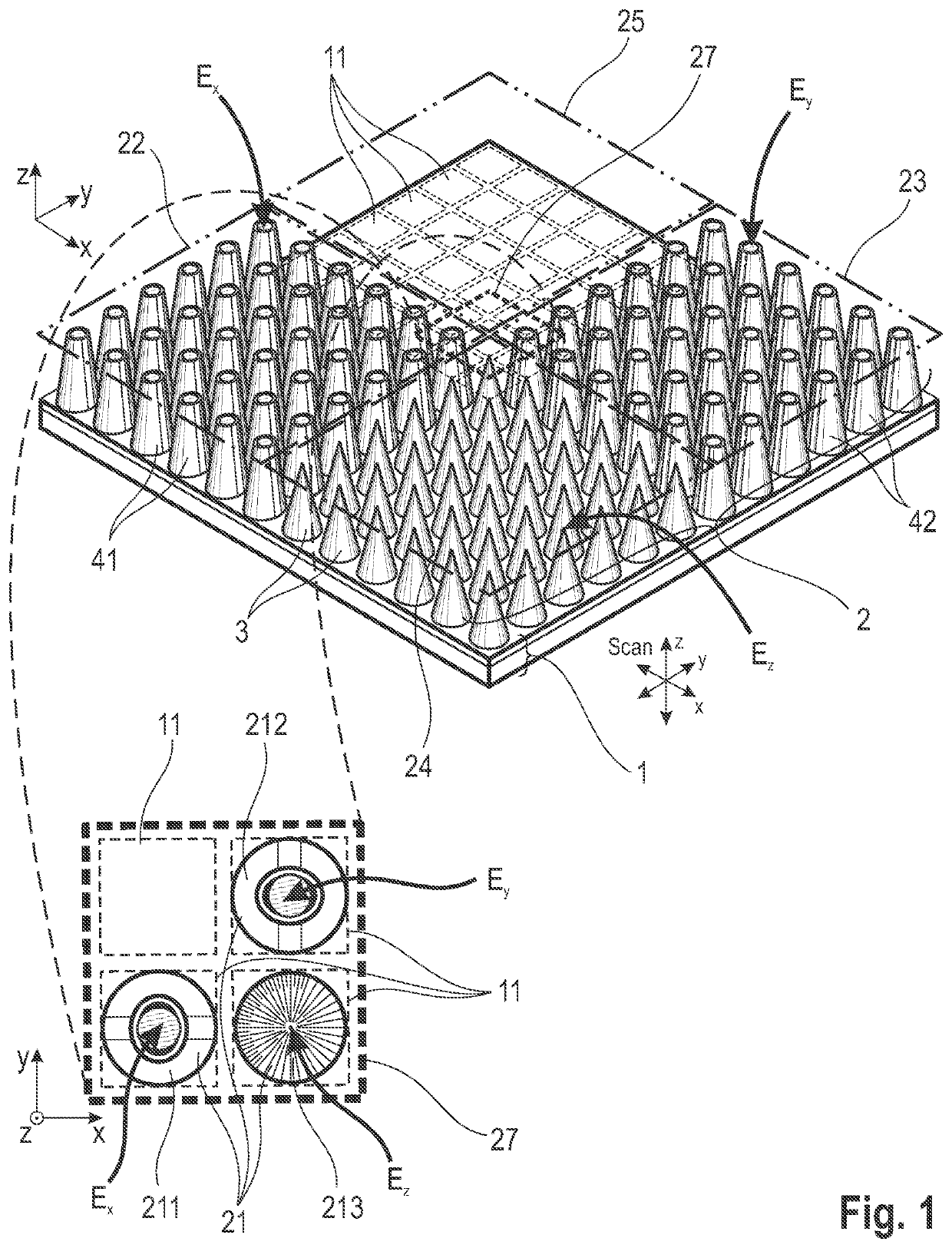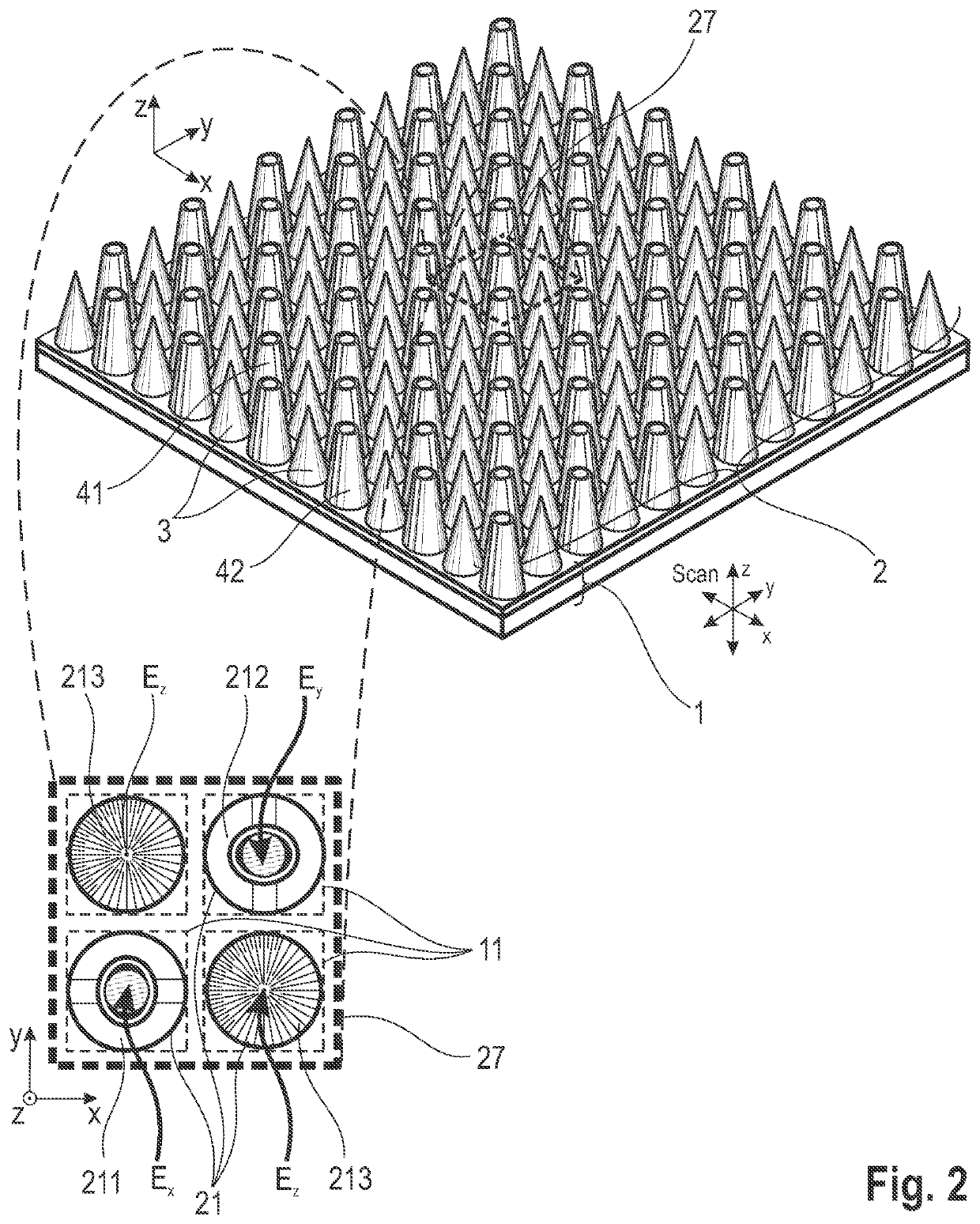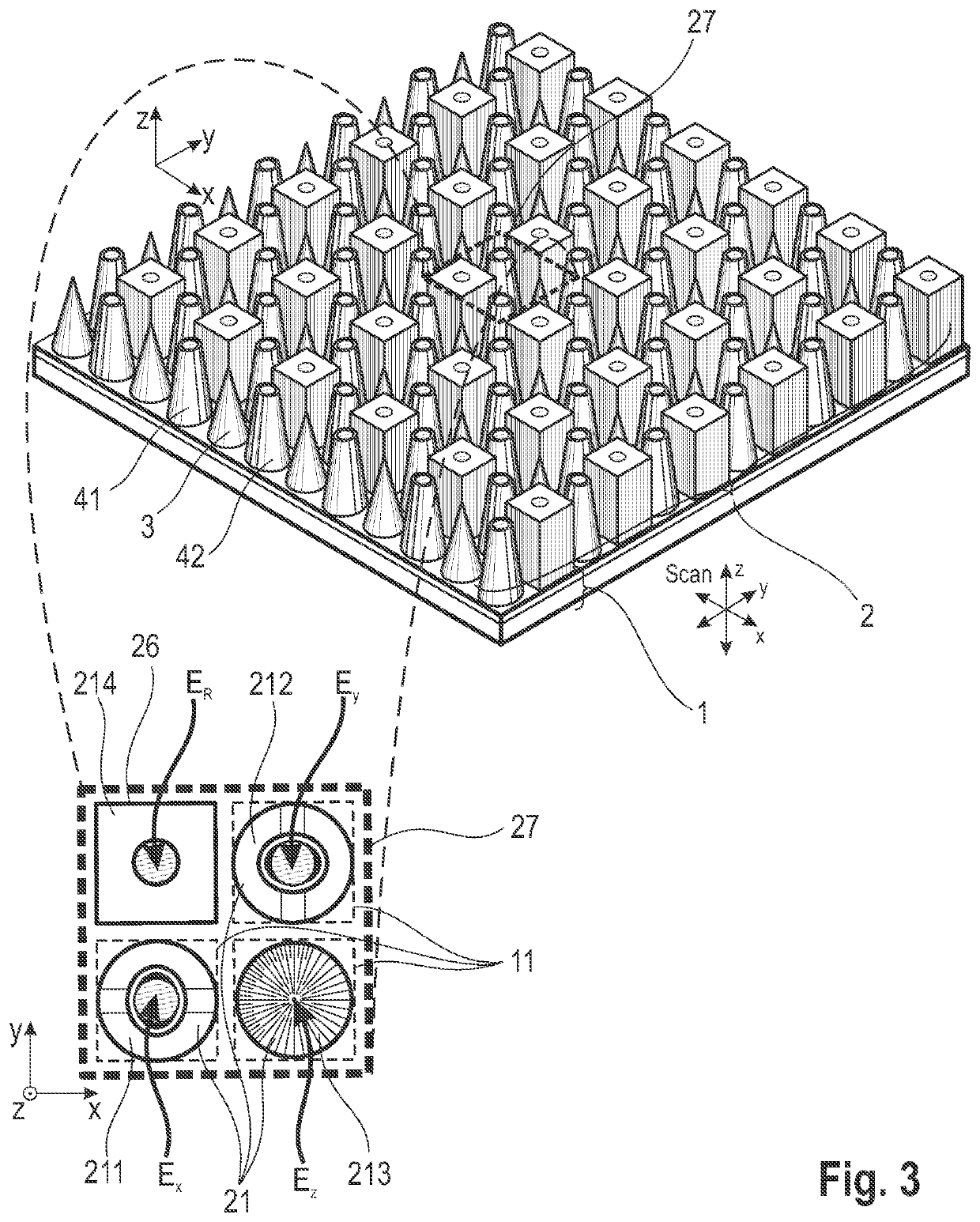Assembly for Detecting the Intensity Distribution of Components of the Electromagnetic Field in Beams of Radiation
a technology of electromagnetic field and intensity distribution, applied in the direction of optical radiation measurement, instruments, spectrometry/spectrophotometry/monochromators, etc., can solve the problems of reducing intensity, arrays are not suitable, and separation according to vector components is only possible in x, so as to achieve the effect of increasing resolution
- Summary
- Abstract
- Description
- Claims
- Application Information
AI Technical Summary
Benefits of technology
Problems solved by technology
Method used
Image
Examples
Embodiment Construction
[0064]Referring to FIG. 1, the basic construction of an arrangement according to the invention comprises a two-dimensional intensity sensor array 1 and a field vector detector array 2 for the different field vector components as spatial arrangement of one structure each for separate detection of the three field vector components. The field vector detector array 2 is arranged above a two-dimensional intensity sensor array (CCD, CMOS, FPA, etc.) and the individual detector structures 21 are mapped to the sensor elements 11 of the intensity sensor array 1 so as to be matched with respect to the pixel grid. The mapping of the detector structures 21 to the sensor elements 11 is preferably carried out pixel-wise (i.e., in a 1-1 mapping), but can also be performed by groups of sensor elements 11 (e.g., 1 to 4, 1 to 9, etc.). An intensity sensor array 1 mapped group-wise in this way can be read out in an accelerated manner by binning such groups. The arrangement of the field vector detector...
PUM
 Login to View More
Login to View More Abstract
Description
Claims
Application Information
 Login to View More
Login to View More - R&D
- Intellectual Property
- Life Sciences
- Materials
- Tech Scout
- Unparalleled Data Quality
- Higher Quality Content
- 60% Fewer Hallucinations
Browse by: Latest US Patents, China's latest patents, Technical Efficacy Thesaurus, Application Domain, Technology Topic, Popular Technical Reports.
© 2025 PatSnap. All rights reserved.Legal|Privacy policy|Modern Slavery Act Transparency Statement|Sitemap|About US| Contact US: help@patsnap.com



